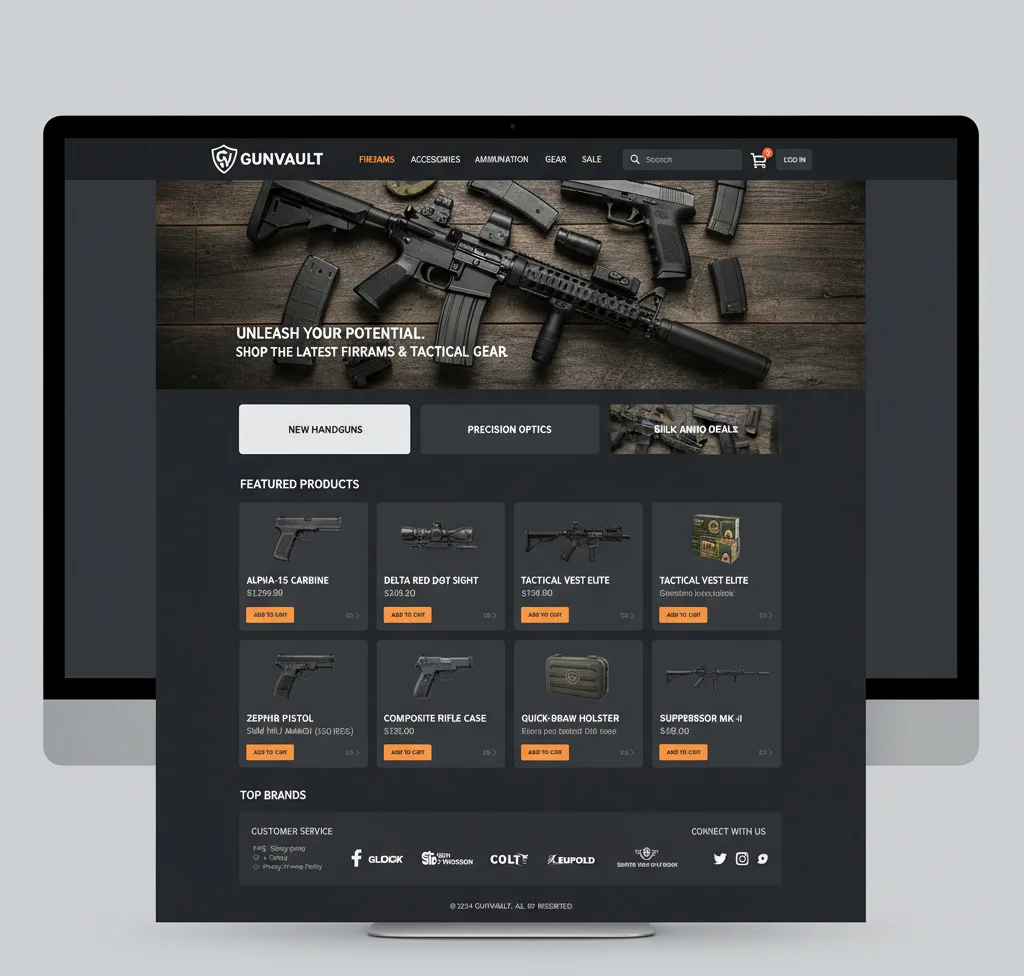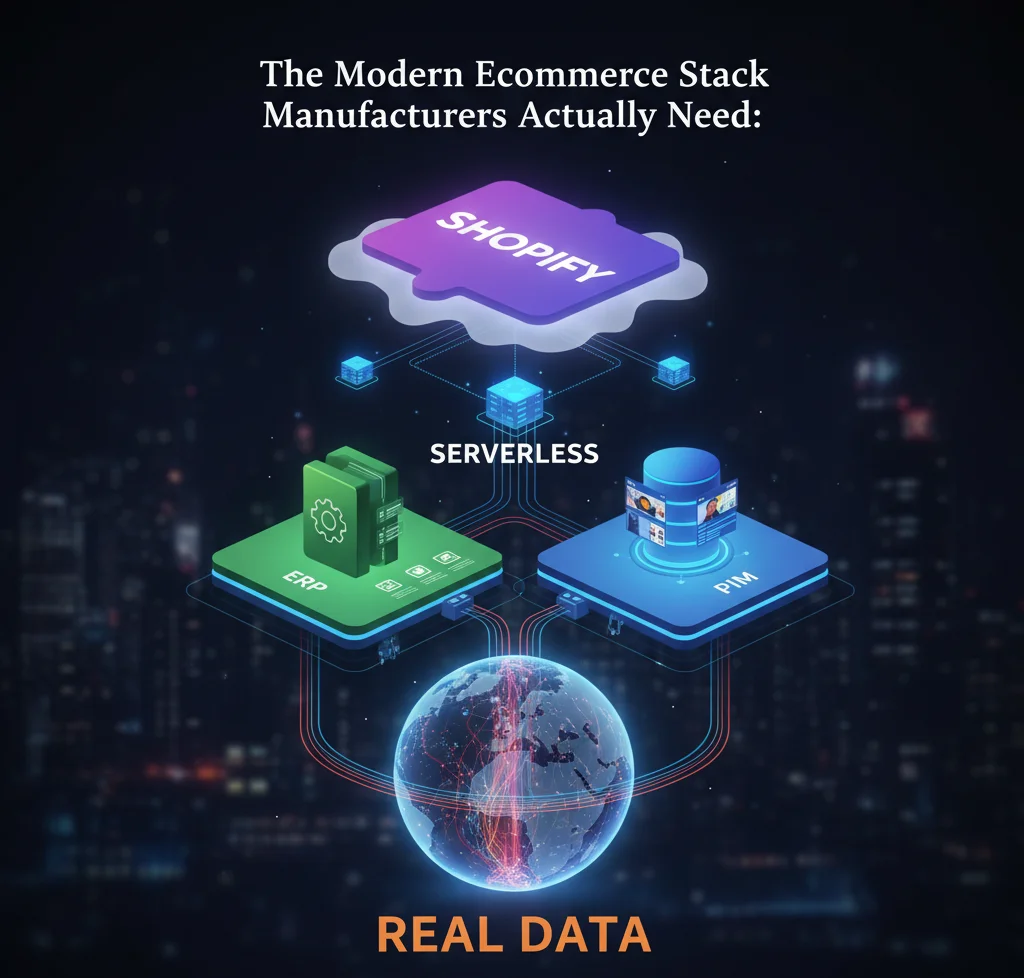
E-Commerce Built for Firearms and Accessories
TL;DR
We build firearms and accessories commerce platforms that enforce compliance in the flow, empower dealers with a fast portal, keep ERP and WMS in sync, and surface the executive metrics that matter. The program ships usable value inside 90 days and reduces tickets while increasing dealer adoption.
Precision. Compliance. Repeatable operations. If you build or distribute firearms and accessories, your commerce stack has to do more than take orders. It has to protect your license, support your dealer network, and turn demand into fulfilled shipments without creating back-office chaos. That is exactly what we design and ship for manufacturers who sell B2B and D2C.
Why regulated e-commerce needs a different stack
Traditional storefronts break under the weight of serialized inventory, FFL routing, MAP enforcement, and state or export restrictions. The result is manual review, spreadsheets, and slow responses to dealers. Our approach bakes rules into the flow so orders move fast and safely, with leadership visibility across channels.
What we deliver in practice
We build dealer portals that make repeat ordering simple, fast, and accurate. Pricing, allocations, and terms are enforced at checkout. Mixed carts split correctly so serialized items route to an FFL and allowed accessories ship direct according to your policy. Age gates and destination restrictions fire before payments, not after. The net effect is fewer touches and fewer tickets.
On the operations side, serialized and kit inventory is tracked the way you actually build and ship. ERP, WMS, and accounting stay in sync with stable IDs and reliable refresh schedules. Warranty and RMA workflows reduce email ping-pong. MAP monitoring gives reps proof and a path to close violations.
Compliance by design
Regulated commerce cannot live in a spreadsheet. We implement FFL verification and destination validation at checkout, run rules at the product and ZIP levels, and record approvals or overrides for clean audits. Access is scoped by user role and location. If a rule blocks an order, the system tells you why.
We have supported brands in this space and understand the reality on the ground: you need to sell confidently without exposing the business. That includes age gates, state rules, export controls, MAP, and the paper trail to back it up.
Dealer success at scale
Dealers should place orders in minutes with live inventory, backorder logic, and clear allocations. They should see pricing, terms, co-op tracking, and warranty status without opening a ticket. Production teams should get preorder windows that match real capacity. Your sales team should receive MAP evidence automatically. That is the bar we set for the portal experience.
Clean data, clean handoffs
Your commerce platform is a hub, not an island. We connect ERP, WMS, PIM, CRM, and accounting so orders, customers, inventory, and invoices align end-to-end. We use consistent identifiers, schedule dependable syncs, and raise alerts when a feed fails or data looks wrong. Executive dashboards in GA4 and Looker Studio keep leadership focused on outcomes, not anecdotes.
A 90-day path to value
We ship early and often.
Days 1–30: discovery, a compliance map, data contracts, and a pilot catalog.
Days 31–60: dealer portal MVP, live FFL checkout, and pricing and inventory sync with baseline reporting and team training.
Days 61–90: warranty and RMA workflows, MAP monitoring, performance hardening, and a go-live runbook with tuning. Each phase produces something your team can use in production.
What leadership can measure
We align the build to metrics your exec team actually cares about: order-to-ship time, support tickets per 1,000 orders, dealer adoption and repeat buys, fill rate and partials, margin by channel, and MAP violations closed. These live on your exec dashboard so you can see progress at a glance.
Quick answers for manufacturers
Can we keep our ERP and WMS? Yes. We sync orders, customers, inventory, and invoices with the same IDs.
How do you handle mixed carts? Serialized items go to an FFL. Allowed accessories ship direct or follow the serialized item based on your policy.
Can dealers see pricing and allocations? Yes. Terms, credit, and allocations display in the portal and are enforced at checkout.
What about export and state restrictions? Rules run at product and destination levels before payment, and decisions are logged for audits.
The outcome
Manufacturers who run this stack reduce manual work, protect compliance, and grow dealer adoption. Orders move faster. Data stays clean. Support volume drops. Leadership gets the clarity to make better decisions. Your team focuses on production and relationships while the platform handles rules and routine tasks.



